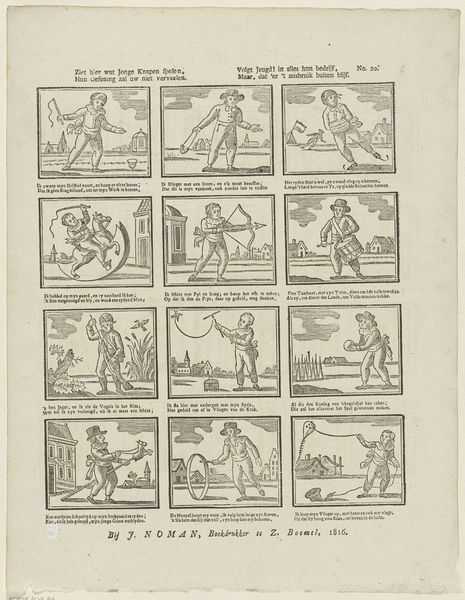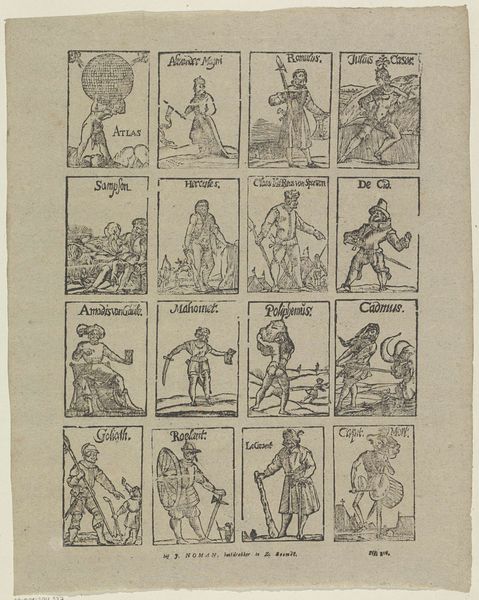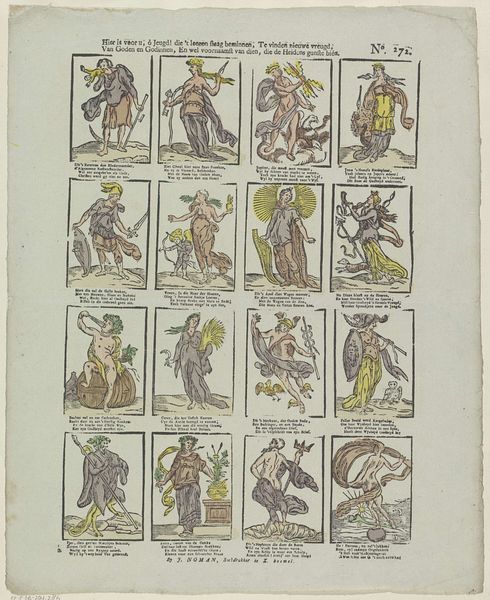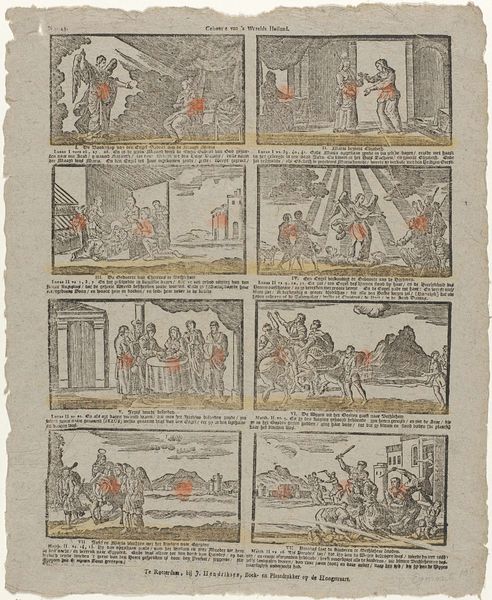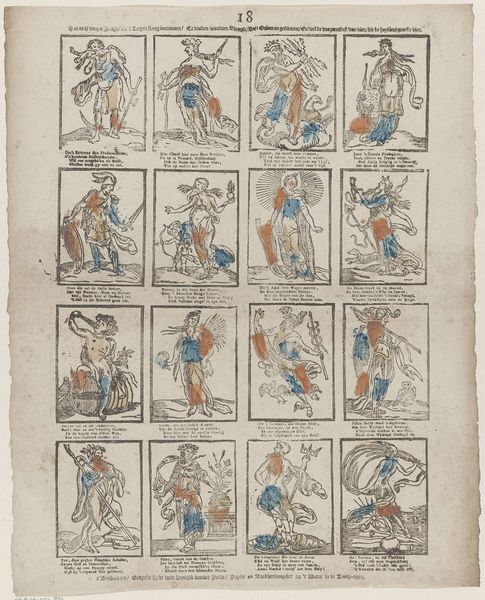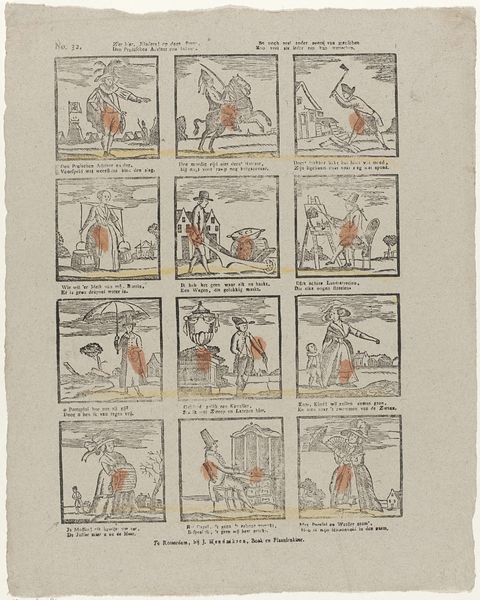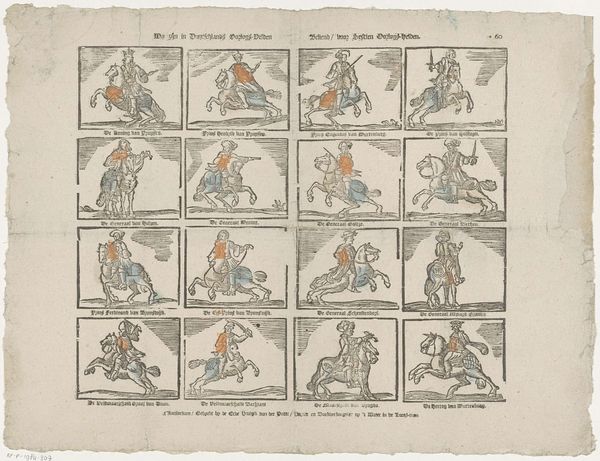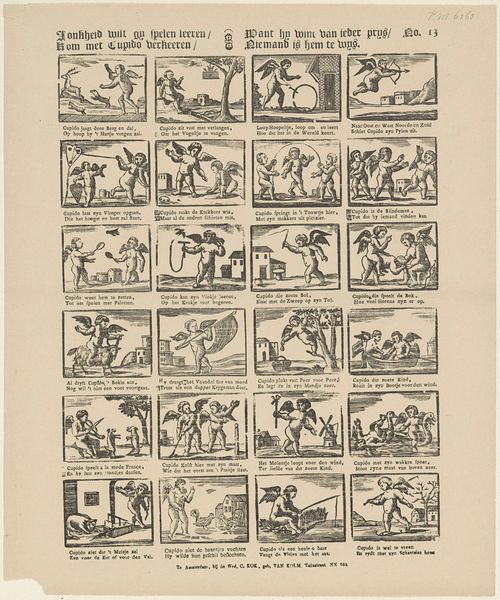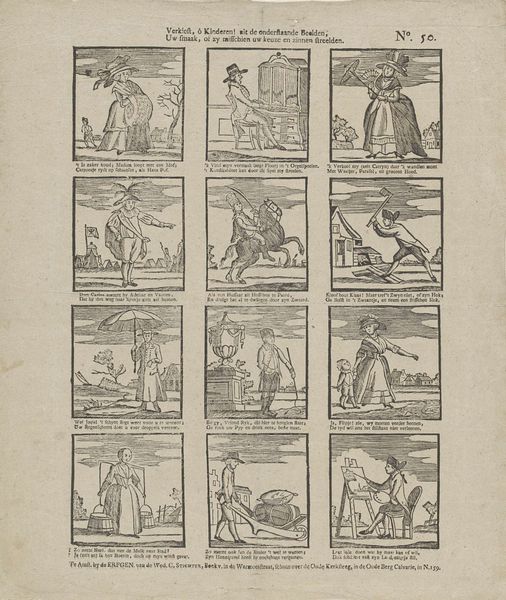
Kind'ren weest tog niet bevreest / als gy deese helden leest 1683 - 1692
0:00
0:00
weduwegijsbertdegroot
Rijksmuseum
graphic-art, print, engraving
#
graphic-art
#
medieval
#
narrative-art
# print
#
figuration
#
line
#
engraving
Dimensions: height 365 mm, width 284 mm
Copyright: Rijks Museum: Open Domain
Editor: So, this print, "Kind'ren weest tog niet bevreest / als gy deese helden leest," dating from 1683-1692, showcases various heroes and mythological figures. It's an engraving, currently held at the Rijksmuseum. The figures are organized almost like a playing card sheet. What's striking is how it assembles all of these disparate figures. What do you see in it? Curator: I'm drawn to how it brings together such a diverse group, visually equating figures like Atlas and Julius Caesar. What unifying idea resonates through these choices, made by weduwe Gijsbert de Groot? Consider the title: "Children, do not be afraid / when you read of these heroes". Does that give you a clue? Editor: Hmm, maybe the figures all represent a kind of ideal, but it's interesting that it groups both classical and seemingly biblical characters together. Curator: Precisely! It suggests a visual compendium of virtues and strengths across time and cultures, blending pagan antiquity, biblical narratives, and emerging European legends like Amadis of Gaul. It's like a memory palace, where the viewer can draw strength from each figure, reminding us that courage takes many forms and comes from many traditions. Editor: That's a helpful connection – the “memory palace” idea – it is a way to collect moral lessons in a time when stories were shared as cultural values. Curator: Exactly. And consider the print medium. Prints allowed for wider distribution and a shared visual vocabulary. Think of these images as building blocks for a collective understanding of heroism. Does seeing them all together alter your perspective? Editor: Yes, I initially saw it as disjointed, but framing it as a cohesive visual encyclopedia changes everything. The message of courage becomes almost universal and available to everyone through these accessible images. Curator: Indeed. And it highlights how artists and publishers actively shaped cultural memory. Each figure holds a piece of a larger narrative. Editor: I appreciate the layers within each image, now they act as cultural building blocks instead of just historical illustrations. Curator: The print encapsulates that moment of intersection of visual, literary and psychological cultures – a rich web of symbolic meanings, open for continuous re-interpretation across generations.
Comments
No comments
Be the first to comment and join the conversation on the ultimate creative platform.


